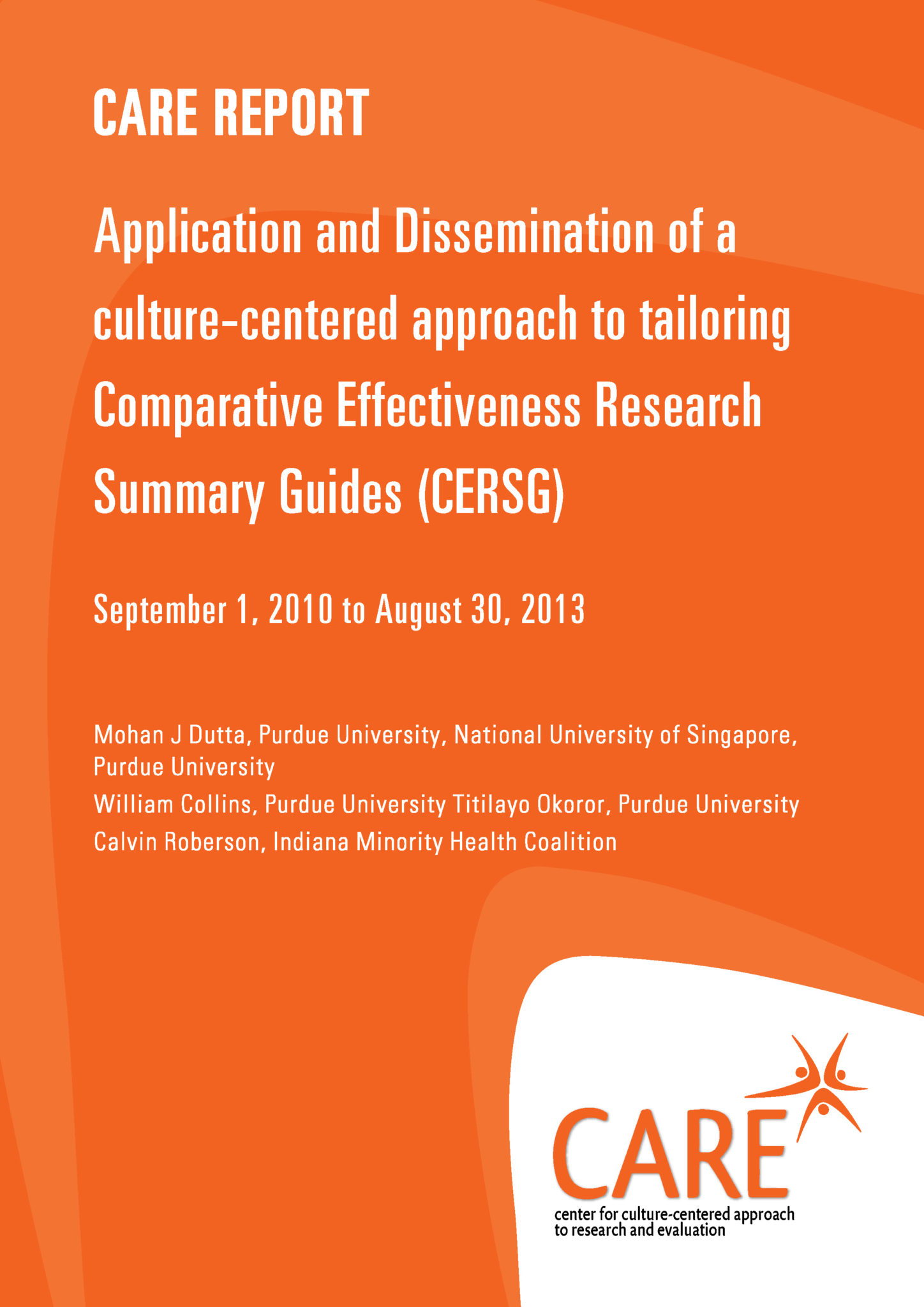CARE Report: Application and Dissemination of a culture-centered approach to tailoring Comparative Effectiveness Research Summary Guides (CERSG)
Mohan J Dutta, Purdue University, National University of Singapore, Purdue University
William Collins, Purdue University
Titilayo Okoror, Purdue University
Calvin Roberson, Indiana Minority Health Coalition
Inclusive Dates of the project: September 1, 2010 to August 30, 2013
Federal Project Officer:
This project acknowledged the support from the AHRQ, Grant Number R18 HS19329-01

Structured Abstract
Purpose: The purpose of the project was to examine the effectiveness of the culture-centered approach (CCA) as a framework for developing and disseminating culturally rooted comparative effectiveness research summary guides among African Americans.
Scope: The project was carried out in partnership with the Indiana Minority Health Coalition in Lake and Marion Counties of India.
Methods: The key method for the project included the development of culturally-centered capacities for the development of comparative effectiveness research summary guides through local partnerships with various community organizations, led by the coalition partners of the Indiana Minority Health Coalition (IMHC) in Lake and Marion Counties of Indiana. An ethnically and socioeconomically similar community (Allen County) was chosen as the control community for the project. The community grounded processes in Lake and Marion Counties of Indiana led to the development of the Heart Health Indiana campaign, involving community peer leaders, religious organizations, hospitals and clinics, and other community locations (mayor’s office, public offices, state fairs etc). The intervention materials were disseminated through face-to-face overviews offered by community peer leaders, media channels (print, radio, and television) and community events (churches, sports fairs etc.). The effectiveness of the intervention was measured by assessing knowledge, attitude toward discussing the guides with the doctor, and behavioral intention at the end of the campaign and comparing with knowledge, attitude, and behavior in a comparison community (Allen County).
Results: Across Lake and Marion Counties, the overall intervention contributed to greater knowledge for each of the knowledge areas covered in the comparative effectiveness research summary guides (CERSGs) compared to the knowledge in the same areas in Allen County.
